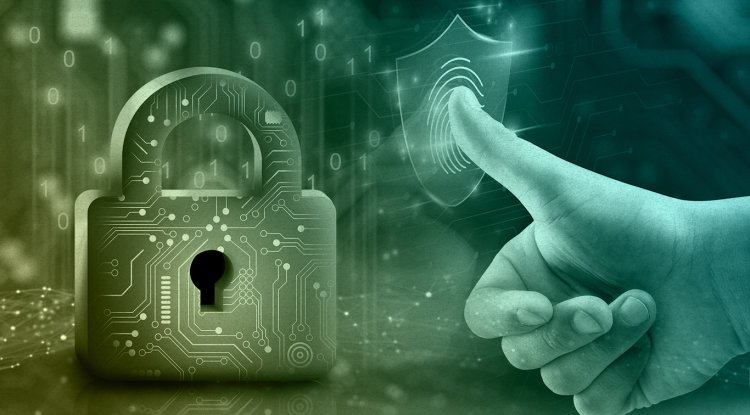"Leveraging AI in Cybercrime Investigations: A Comprehensive Guide to Detection, Prevention, and Digital Forensics"
AI plays a crucial role in cybercrime investigations by detecting threats, analyzing malware and automating investigative tasks. It monitors networks for suspicious activity, analyzes digital evidence and helps predict future attacks. Through AI-powered tools, investigators can efficiently trace cybercriminals, recover data, and prevent financial losses, ensuring a safer digital environment.

What is AI (Artificial Intelligence)?
In simple terms, Artificial Intelligence (AI) refers to machines or software programs that can think, learn, and make decisions like humans. AI uses algorithms (a set of instructions) to analyze large amounts of data, recognize patterns, and perform tasks without constant human input. It can adapt and improve its performance over time through a process called machine learning.
What is Cybercrime?
Cybercrime refers to illegal activities carried out using computers, networks, or digital devices. It involves hacking, data theft, identity fraud, online scams, ransomware attacks, and other malicious acts. Cybercriminals often target individuals, businesses, and government systems to steal data, disrupt operations, or extort money.
How AI Helps in Cybercrime Investigations (In Detail)
AI plays a crucial role in preventing, detecting, investigating, and responding to cybercrimes. Investigators and cybersecurity professionals rely on AI to automate tasks, analyze data quickly, and uncover hidden evidence. Let’s break down how AI assists at each stage of a cybercrime investigation:
✅ 1. Threat Detection and Monitoring
- How It Works: AI-powered systems monitor networks, applications, and devices in real-time to detect unusual or suspicious activities.
- Example: If a hacker tries to access a system from a foreign country or if there’s a sudden surge in data transfers, AI detects it instantly.
- Benefit: AI reduces response time and prevents major cyberattacks.
✅ 2. Malware and Ransomware Analysis
- How It Works: AI uses machine learning to compare files with a database of known malware. Even if the malware is new, AI can recognize its behaviour as suspicious.
- Example: AI can detect ransomware trying to encrypt files and stop it before any damage is done.
- Benefit: It prevents data loss and minimizes the impact of malware attacks.
✅ 3. Incident Response and Investigation
- How It Works: After a cyberattack, AI tools help investigators analyse system logs, network data, and other digital evidence to trace the attack’s origin.
- Example: AI identifies the attack path, compromised accounts, and data stolen by analysing large volumes of data in minutes.
- Benefit: Speeds up investigations and helps in prosecuting cybercriminals.
✅ 4. Predicting Cyberattacks
- How It Works: AI analyses past attack patterns to predict potential future threats. It uses algorithms to identify vulnerable points in a system.
- Example: Financial institutions use AI to predict and prevent fraudulent transactions.
- Benefit: Allows organizations to strengthen security before an attack occurs.
✅ 5. Digital Forensics
- How It Works: AI tools assist forensic investigators in extracting data from compromised or damaged devices. They recover deleted files, analyse memory dumps, and find hidden data.
- Example: AI can reconstruct timelines of cyber incidents by analysing digital footprints.
- Benefit: Provides critical evidence for legal investigations.
✅ 6. Social Media and Dark Web Monitoring
- How It Works: AI scans social media platforms, chat forums, and the dark web to identify criminal activities like illegal data sales or ransomware negotiations.
- Example: AI tracks conversations mentioning stolen credit card details on the dark web.
- Benefit: Helps law enforcement agencies track and dismantle cybercriminal networks.
✅ 7. Fraud Detection and Prevention
- How It Works: AI analysis financial transactions to detect patterns of fraudulent activity. It uses anomaly detection to identify suspicious behaviour.
- Example: If a customer’s credit card is used in multiple locations within minutes, AI flags it as a possible fraud.
- Benefit: Prevents financial losses and protects customers.
✅ 8. Facial Recognition and Image Analysis
- How It Works: AI can analyse images and videos to identify suspects using facial recognition technology.
- Example: Law enforcement uses AI to scan CCTV footage for suspects in cybercrime cases.
- Benefit: Accelerates suspect identification and evidence gathering.
✅ 9. Natural Language Processing (NLP)
- How It Works: AI with NLP capabilities can read and analyze emails, chats, or documents to detect threats like phishing attempts.
- Example: AI scans thousands of company emails to identify fake invoices or phishing emails.
- Benefit: Prevents employees from falling victim to scams.
✅ 10. Automating Investigative Tasks
- How It Works: AI reduces the workload by automating repetitive tasks like sorting data, analysing logs, and generating reports.
- Example: AI can quickly analyze thousands of log entries to find a malicious activity pattern.
- Benefit: Investigators can focus on solving complex cases instead of spending time on manual tasks.
Real-World Example of AI in Cybercrime Investigation
- Ransomware Attack: After a major ransomware attack, AI systems identified the malware’s encryption pattern. Investigators used AI to trace the ransomware's origin, detect its command-and-control server, and track down the attackers.
- Bank Fraud: A bank used AI to detect abnormal money transfers between accounts. AI blocked the fraudulent transactions and notified the authorities.
- Child Exploitation Investigation: AI analysed online chats and images to identify and arrest criminals involved in illegal activities.
Conclusion
AI is a powerful ally in the fight against cybercrime. It not only detects threats quickly but also provides valuable insights that help investigators solve cases faster. With AI handling massive data analysis and automating tedious tasks, law enforcement agencies and cybersecurity professionals can focus on the bigger picture — keeping the digital world safe.
साइबर क्राइम जांच में एआई का उपयोग: पहचान, रोकथाम और डिजिटल फोरेंसिक के लिए एक व्यापक मार्गदर्शिका
आर्टिफिशियल इंटेलिजेंस (AI) क्या है?
आर्टिफिशियल इंटेलिजेंस (AI) उन मशीनों या सॉफ़्टवेयर प्रोग्राम्स को कहा जाता है जो इंसानों की तरह सोच सकते हैं, सीख सकते हैं और निर्णय ले सकते हैं। एआई एल्गोरिदम (निर्देशों का एक सेट) का उपयोग करके डेटा का विश्लेषण करता है, पैटर्न को पहचानता है और बिना निरंतर मानव इनपुट के कार्य करता है। समय के साथ, यह मशीन लर्निंग के माध्यम से अपने प्रदर्शन में सुधार कर सकता है।
साइबर क्राइम क्या है?
साइबर क्राइम वे गैरकानूनी गतिविधियां हैं, जो कंप्यूटर, नेटवर्क या डिजिटल डिवाइस का उपयोग करके की जाती हैं। इसमें हैकिंग, डेटा चोरी, पहचान धोखाधड़ी, ऑनलाइन स्कैम, रैंसमवेयर अटैक और अन्य आपराधिक कृत्य शामिल हैं। साइबर अपराधी व्यक्तिगत, व्यावसायिक और सरकारी सिस्टम को निशाना बनाकर डेटा चोरी करने, संचालन बाधित करने या फिरौती मांगने का प्रयास करते हैं।
साइबर क्राइम जांच में एआई कैसे मदद करता है?
एआई साइबर अपराधों को रोकने, पहचानने, जांच करने और प्रतिक्रिया देने में महत्वपूर्ण भूमिका निभाता है। जांचकर्ता और साइबर सुरक्षा विशेषज्ञ एआई का उपयोग करके कार्यों को स्वचालित करने, डेटा को तेजी से विश्लेषित करने और छिपे हुए साक्ष्य को उजागर करने में सक्षम होते हैं। आइए जानें कि एआई साइबर क्राइम जांच में कैसे सहायता करता है:
✅ 1. खतरे की पहचान और निगरानी
• कैसे काम करता है: एआई-पावर्ड सिस्टम रियल-टाइम में नेटवर्क, एप्लिकेशन और डिवाइस की निगरानी करते हैं और किसी भी असामान्य या संदिग्ध गतिविधि का पता लगाते हैं।
• उदाहरण: यदि कोई हैकर किसी विदेशी देश से सिस्टम एक्सेस करने का प्रयास करता है या डेटा ट्रांसफर में अचानक वृद्धि होती है, तो एआई इसे तुरंत पकड़ लेता है।
• लाभ: एआई प्रतिक्रिया समय को कम करता है और बड़े साइबर हमलों को रोकता है।
✅ 2. मैलवेयर और रैंसमवेयर विश्लेषण
• कैसे काम करता है: एआई मशीन लर्निंग का उपयोग करके फाइलों की तुलना ज्ञात मैलवेयर के डेटाबेस से करता है। यदि कोई नया मैलवेयर है, तो भी एआई उसके संदिग्ध व्यवहार को पहचान सकता है।
• उदाहरण: एआई रैंसमवेयर को फाइल एन्क्रिप्ट करने से पहले पकड़ सकता है।
• लाभ: डेटा लॉस को रोका जा सकता है और मैलवेयर अटैक का प्रभाव कम किया जा सकता है।
✅ 3. घटना प्रतिक्रिया और जांच
• कैसे काम करता है: साइबर अटैक के बाद, एआई टूल्स सिस्टम लॉग्स, नेटवर्क डेटा और अन्य डिजिटल साक्ष्यों का विश्लेषण करके हमले की उत्पत्ति का पता लगाते हैं।
• उदाहरण: एआई कुछ ही मिनटों में अटैक पथ, समझौता किए गए अकाउंट्स और चोरी हुए डेटा की पहचान कर सकता है।
• लाभ: जांच प्रक्रिया तेज होती है और साइबर अपराधियों को पकड़ने में सहायता मिलती है।
✅ 4. साइबर अटैक्स की भविष्यवाणी
• कैसे काम करता है: एआई पिछले अटैक पैटर्न का विश्लेषण करके संभावित भविष्य के खतरों की भविष्यवाणी करता है।
• उदाहरण: वित्तीय संस्थान एआई का उपयोग करके धोखाधड़ी वाली लेन-देन की भविष्यवाणी करते हैं।
• लाभ: संगठनों को सुरक्षा उपाय पहले से मजबूत करने में मदद मिलती है।
✅ 5. डिजिटल फोरेंसिक • कैसे काम करता है: एआई फोरेंसिक जांचकर्ताओं को क्षतिग्रस्त डिवाइस से डेटा निकालने में मदद करता है। यह डिलीट की गई फाइलों को रिकवर करता है, मेमोरी डंप का विश्लेषण करता है और छिपा हुआ डेटा ढूंढता है।
• उदाहरण: एआई डिजिटल फूटप्रिंट्स का विश्लेषण करके साइबर घटनाओं की टाइमलाइन पुनर्निर्मित कर सकता है।
• लाभ: कानूनी जांच के लिए महत्वपूर्ण साक्ष्य प्रदान करता है।
✅ 6. सोशल मीडिया और डार्क वेब मॉनिटरिंग
• कैसे काम करता है: एआई सोशल मीडिया प्लेटफॉर्म, चैट फोरम और डार्क वेब को स्कैन करके अवैध गतिविधियों की पहचान करता है।
• उदाहरण: एआई चोरी किए गए क्रेडिट कार्ड डिटेल्स को बेचने वाली डार्क वेब बातचीत को ट्रैक करता है
। • लाभ: कानून प्रवर्तन एजेंसियों को साइबर अपराधी नेटवर्क को ट्रैक करने में मदद करता है।
✅ 7. धोखाधड़ी की पहचान और रोकथाम
• कैसे काम करता है: एआई वित्तीय लेन-देन का विश्लेषण करके धोखाधड़ी की गतिविधियों को पहचानता है। यह संदेहास्पद व्यवहार को पहचानने के लिए एनॉमली डिटेक्शन का उपयोग करता है।
• उदाहरण: यदि किसी ग्राहक का क्रेडिट कार्ड कुछ ही मिनटों में कई स्थानों पर उपयोग होता है, तो एआई इसे धोखाधड़ी के रूप में फ़्लैग कर सकता है।
• लाभ: वित्तीय हानि को रोका जा सकता है और ग्राहकों की सुरक्षा की जा सकती है।
✅ 8. चेहरे की पहचान और इमेज विश्लेषण
• कैसे काम करता है: एआई छवियों और वीडियो का विश्लेषण करके फेसियल रिकग्निशन टेक्नोलॉजी के माध्यम से संदिग्धों की पहचान कर सकता है।
• उदाहरण: कानून प्रवर्तन एजेंसियां सीसीटीवी फुटेज को स्कैन करने के लिए एआई का उपयोग करती हैं।
• लाभ: संदिग्धों की तेजी से पहचान करने और सबूत इकट्ठा करने में सहायता मिलती है।
✅ 9. नेचुरल लैंग्वेज प्रोसेसिंग (NLP)
• कैसे काम करता है: एआई के एनएलपी क्षमताएं ईमेल, चैट या दस्तावेजों को पढ़ और विश्लेषण कर सकती हैं ताकि फिशिंग जैसे साइबर खतरों का पता लगाया जा सके।
• उदाहरण: एआई कंपनी की हजारों ईमेल को स्कैन करके नकली इनवॉइस या फिशिंग ईमेल को पहचान सकता है।
• लाभ: कर्मचारियों को साइबर स्कैम से बचाने में मदद करता है।
✅ 10. जांच कार्यों का स्वचालन
• कैसे काम करता है: एआई डेटा को वर्गीकृत करने, लॉग्स का विश्लेषण करने और रिपोर्ट जनरेट करने जैसे दोहराए जाने वाले कार्यों को स्वचालित करके कार्यभार को कम करता है।
• उदाहरण: एआई हजारों लॉग एंट्रीज को जल्दी से स्कैन करके किसी दुर्भावनापूर्ण गतिविधि के पैटर्न की पहचान कर सकता है।
• लाभ: जांचकर्ता जटिल मामलों को हल करने पर ध्यान केंद्रित कर सकते हैं, बजाय मैन्युअल कार्यों पर समय व्यतीत करने के।
✅ वास्तविक दुनिया में साइबर क्राइम जांच में एआई के उदाहरण
- रैंसमवेयर अटैक: एक बड़े रैंसमवेयर अटैक के बाद, एआई सिस्टम ने मैलवेयर के एन्क्रिप्शन पैटर्न की पहचान की। जांचकर्ताओं ने एआई का उपयोग करके रैंसमवेयर की उत्पत्ति का पता लगाया, उसके कमांड-एंड-कंट्रोल सर्वर को खोजा और अपराधियों को ट्रैक किया।
- बैंक फ्रॉड: एक बैंक ने एआई का उपयोग करके खातों के बीच असामान्य धन हस्तांतरण का पता लगाया। एआई ने धोखाधड़ी वाली लेन-देन को ब्लॉक कर दिया और अधिकारियों को सूचित किया।
- बाल शोषण की जांच: एआई ने ऑनलाइन चैट और छवियों का विश्लेषण करके अवैध गतिविधियों में शामिल अपराधियों की पहचान की और उनकी गिरफ्तारी सुनिश्चित की।
✅ निष्कर्ष
एआई साइबर अपराध के खिलाफ लड़ाई में एक शक्तिशाली सहयोगी है। यह न केवल खतरों का तेजी से पता लगाता है, बल्कि मूल्यवान अंतर्दृष्टि भी प्रदान करता है जो जांचकर्ताओं को मामलों को जल्दी हल करने में मदद करती है। एआई के विशाल डेटा विश्लेषण और दोहराए जाने वाले कार्यों के स्वचालन को संभालने के साथ, कानून प्रवर्तन एजेंसियां और साइबर सुरक्षा पेशेवर बड़े उद्देश्य पर ध्यान केंद्रित कर सकते हैं — डिजिटल दुनिया को सुरक्षित रखना।
Follow cyberdeepakyadav.com on
Facebook, Twitter, LinkedIn, Instagram, and YouTube
What's Your Reaction?






















